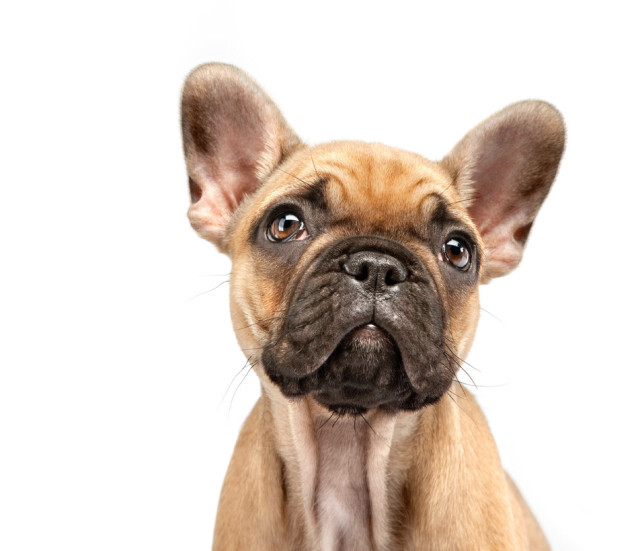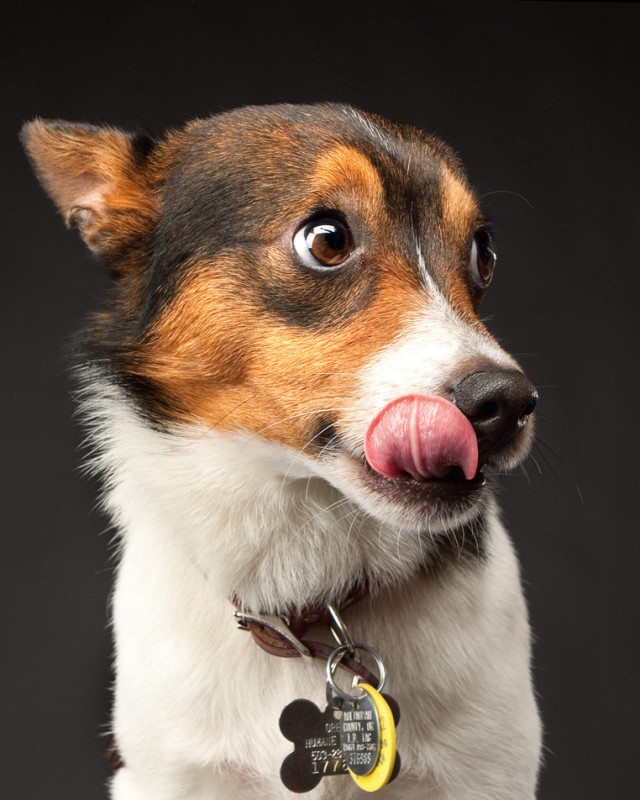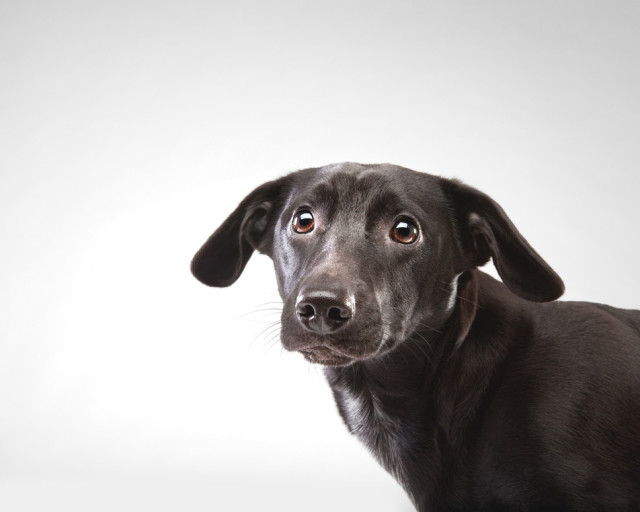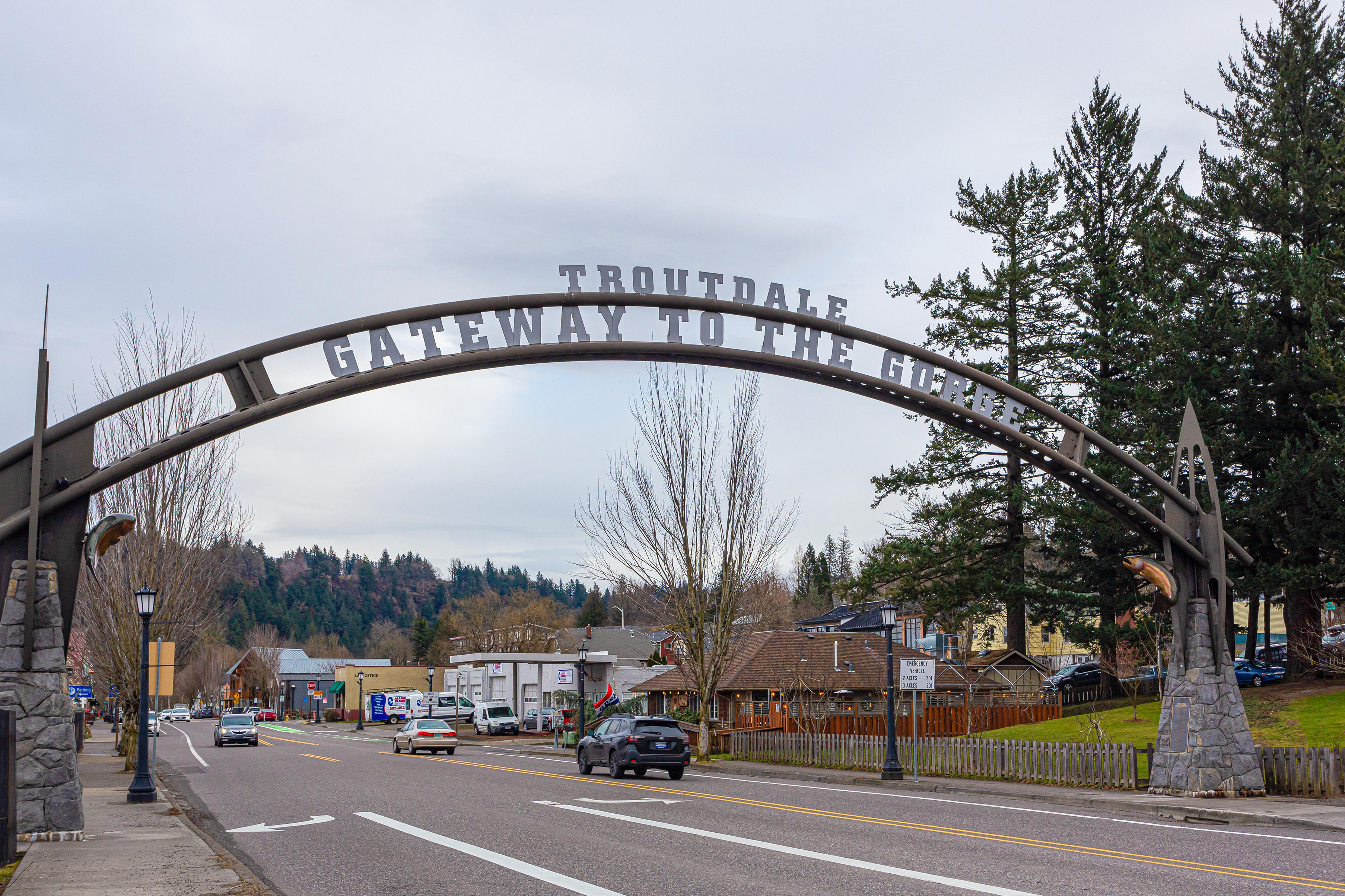A Dog's Life?
LAST APRIL, I MET A YOUNG, well-educated student from China who told me what a grand time he was having here in Portland, studying engineering, going to Blazers games, and learning such quaint American customs as “going dutch.” The one thing this new city lacked, he told me, was his favorite dish: roast dog. Offering a bit of friendly advice, I suggested he avoid advertising this culinary preference in Portland.
Here, I explained, dogs are revered as pets, a bit like cows in India—not that we are like India, I carefully hedged, or that there is anything wrong with India. Not to worry, he replied: Chairman Mao banned pets as symbols of “bourgeois decadence” in the 1960s, but companion dogs have more recently become all the rage among the country’s newly minted affluent class. Nonetheless, the rising popularity of pets has failed to curb regional appetites for dog meat, which is considered in some parts of the country to be very nutritious—and an aphrodisiac to boot. So last winter, when members of the Chinese government, backed by animal welfare activists, proposed legislation that would allow individual provinces to ban the slaughter of dogs, the nation became embroiled in a debate about whether people can have their pets and eat them too.
The Chinese dilemma of the dog reflects various sea changes occurring in that nation—economic, social, and psychological. But in the United States, attitudes toward dogs are also undergoing a cultural revolution that similarly underscores our own shifting nature. As a stroll past businesses such as Dogs Dig It, the Hip Hound, or LexiDog Boutique & Social Club will reveal, Portland is leading the canine strut.

Thirty years ago, dogs often spent their days outdoors, rain or shine, and were deemed by their owners to be happy enough with a bowl of kibble, a chewed-up tennis ball, and the occasional hug from a sticky-fingered child. Such dogs (known as “latchkey” dogs by people who study such things) still exist today. But there is also a new breed in town: the structured and pampered dog, a creature who is lavished with an ever-expanding array of products and services—from doggie day care to dog yoga—and whose life is carefully orchestrated by humans.
“When I was growing up, our dog, Duke, had a nice house with a burlap door, and if he ever got inside [our house], it was by accident,” says Bob Vetere, president of the American Pet Products Association, describing the difference in dogs’ lives, then and now. Today, Vetere’s family’s golden retriever, Dakota, reclines on a living room carpet matched to the color of her coat. “When she does go out, it’s by appointment.”
According to Vetere, the dominant trend in the pet industry is “humanization”—the tendency to treat animals like people instead of, well, animals. And it’s more than a consumer fad; it’s a sociological phenomenon.
“Dogs have always straddled the divide between animals and humans—neither wild creatures nor totally assimilated dependents,” says James Serpell, director of the Center for the Interaction of Animals and Society at the University of Pennsylvania School of Veterinary Medicine. But in the 21st century, canines have drifted more and more toward assimilation. “We now view dogs as people, little people,” he says.
The creeping anthropomorphism of dogs in the United States raises several questions—among them, why is this happening? If we are re-making dogs in our own image, what kind of image are we projecting? And finally: is this a good thing for dogs? Such questions have special resonance in Portland, which is consistently ranked (by Forbes, Men’s Health, and other magazines) as one of the most dog-friendly cities in the country, based on the number of veterinarians, doggie day cares, and dog parks. (We boast 32 dog parks, more than any other city in the country.) Armed with the notion that in Portland, “Dogs R Us,” I set out to explore who, exactly, we have become.

Andrea Schneider might be considered a typical 21st-century dog owner. The consultant and Pearl District denizen has her golden retriever, Ellie, with her “most of the day”; loves to go to Barista, the Pearl District café that allows dogs in the lobby; and is the founder of pdxdog.com, a social networking site for dog owners that features updates on everything from the “Portland’s Next TopDog Model Contest” to dog-focused iPhone apps.
I asked Schneider why people now spend so much time—and money—on their dogs. (Americans dropped $46 billion on pets last year, up from $29 billion in 2001.) Given Schneider’s pedigree, I expected her to wax poetic about Ellie and all her treats; instead, she sounded more like a social scientist than a besotted dog owner. Demographic changes such as divorce and delayed marriage and child rearing have created “upheaval in the social structure,” she says. As a result, “relationships people used to count on for love and contact are now including dogs—because they are true companions.” Vetere offers a similar, albeit sociopolitical, analysis. “During scary times,” he explains, “dogs are refuge, solace, and comfort.”
Sure, that statement oozes more than a little marketing pitch. But by most accounts, dogs are indeed ideal psychological pacifiers. Over the past several decades, researchers have compiled an array of evidence demonstrating the mental and physical benefits of pet ownership, which has been found to alleviate everything from depression to heart disease. Such studies help explain the canine cultural transition—from dog as plaything to dog as partner—as well as the money people now shell out for the kinds of care previously reserved for (well-off) humans: $40 dog hydrotherapy treatments, $120 dog acupuncture appointments, $60 dog massage sessions. (According to the website for one local purveyor, massages are “part of a well-rounded health and wellness plan for … your animals.”)
But as the boundary between dogs and their owners blurs, the everyday realities of a dog’s life are also changing.

When I was growing up in Seattle in the 1970s, we had an Old English sheepdog named Daphne Brandywine. (She was named after the gothic writer Daphne Du Maurier, and a river in J.R.R. Tolkien’s Lord of the Rings.) Theoretically, Daphne spent much of her life in our backyard, but because it was fenced in on only three sides, she wandered around the neighborhood quite a bit, chasing cats and birds and digging holes in adjacent lawns. Every once in a while, a friend would tell me, “Hey, I ran into Daphne the other day,” as if Daphne were some mutual acquaintance she had encountered in the grocery store.
Daphne always reminded me of Ribsy, the beloved mutt in Beverly Cleary’s classic children’s novels set in 1960s Portland. In books like Henry Huggins and Henry and Ribsy, the city is a dog’s playground and a place where a four-legged hound gets into all manner of trouble: sneaking into football stadiums, stealing lunches, and sending policemen on wild goose chases. Today, Ribsy, the statue, is immortalized in the Grant Park sculpture garden, which overlooks the park’s popular off-leash area.
Romping in dog parks is as close as many city dogs come to true freedom of movement. Packs of animals leap joyously into the air; ears flattened, they chase after a squirrel. And yet, today’s off-leash areas are in fact no place for free-spirited canines eager to mix it up with a motley (urban) crew. Like many Portland dog parks, the Grant Park facility is subject to strict regulations, including limited morning and evening hours, to minimize conflicts with other park users such as kids and soccer players. Dog parks may also reveal more about our own needs than those of our best friends. Observe the omnipresent Homo sapiens, who monitor their unleashed pets, trade stories about Anna and Timothy’s latest antics, and, yes, ask fellow dog owners on dates. “In a time when it’s harder to meet people,” Schneider notes, “dogs are a social lubricant.”
Acting as matchmaker may not be such an onerous role for a dog to play. But the benefits of these proliferating canine spaces—and the attitudes that govern them—are ambiguous. Today, dogs receive better medical care, are better protected from the elements, and are less likely to be hit by cars than their 20th-century counterparts, says Serpell. At the same time, he adds, “dogs are much more restricted today. They are required to be at the beck and call of their owners. That’s the downside.”
And so, the more we love and cherish our dogs, and the more we carve out special, dog-friendly real estate, the more constrained and dependent their lives actually become. Yet, the dog park isn’t the only illustration of a modern-day paradox. In a city where non-service dogs are now allowed in many hotels, office buildings, and restaurants, it’s strange to think of a dog’s life as being more limited than it used to be. People may take their pets with them absolutely everywhere, but like a child wandering among the forest of legs at a swanky cocktail party, it’s not always clear what an energetic canine is supposed to do in these human spaces.
The increasing humanization of dogs in the United States is resulting in a corresponding increase in what Serpell describes as “frustrated, hyper-reactive dogs.” We then have to take such behaviorally challenged dogs, he notes, “to expensive veterinarians to fix a problem that is of our own doing.” A harsh analysis to be sure, yet one that’s validated by reports describing a litany of woes, including rising rates of dog obesity and diabetes, as well as extreme separation anxiety triggered by overdependence—a condition that’s often treated with Reconcile, the canine version of Prozac.
Serpell’s critique helps put the trend toward the humanization of dogs in broader perspective. If people are treating dogs more like people, what that really means is that they’re treating dogs more like children. And as any parent knows, myself included, the prevalent child-rearing trend of the 21st century is “helicopter” parenting—a kind of overprotective hovering that has produced, at least according to the mass media, a generation of much-loved yet overscheduled, dependent, and anxiety-ridden kids. But just as today’s parent is beginning to question this hypervigilant approach to raising kids, so too might we ask: would our dogs be better off with a little less of our love? The question may be expanded to our growing affection for nonhuman species. Urban pet owners are among the primary donors to animal rights organizations such as People for the Ethical Treatment of Animals. Contemporary attitudes toward the animals we choose as companions, then, are inextricably connected to a larger social movement, in which a growing number of us think we should treat all animals more like ourselves.
It’s an issue the Chinese are also pondering, although not always from the same perspective. As critics of the country’s proposed anti–dog slaughter legislation have argued, why ban the killing of dogs for food unless you ban it for other animals, too? In the United States, defining ethical treatment presents its own set of challenges. That is, protecting dogs from a brutal death (and life) is a reasonable standard for animal welfare. But once that benchmark has been met, the “ethical” approach to our relationships with other species is not so clear. Is humanization the same thing as treating animals humanely? Or is there another way?
The answer may be wagging its tail outside Portland coffee shops, grocery stores, and farmers markets, where on any given day, dozens of men’s best friends are tied up, waiting anxiously for their owners to emerge. It’s a phenomenon I’ve come to think of as “dogs in waiting.” And perhaps even more than doggie yoga or Prozac, it symbolizes the emerging canine identity crisis. Tethered in a kind of limbo, dogs are neither fully one of us nor free to be completely what they are. We can take our pets to day care, feed them organic food, and treat them to massages. Or we could just loosen the leash.




